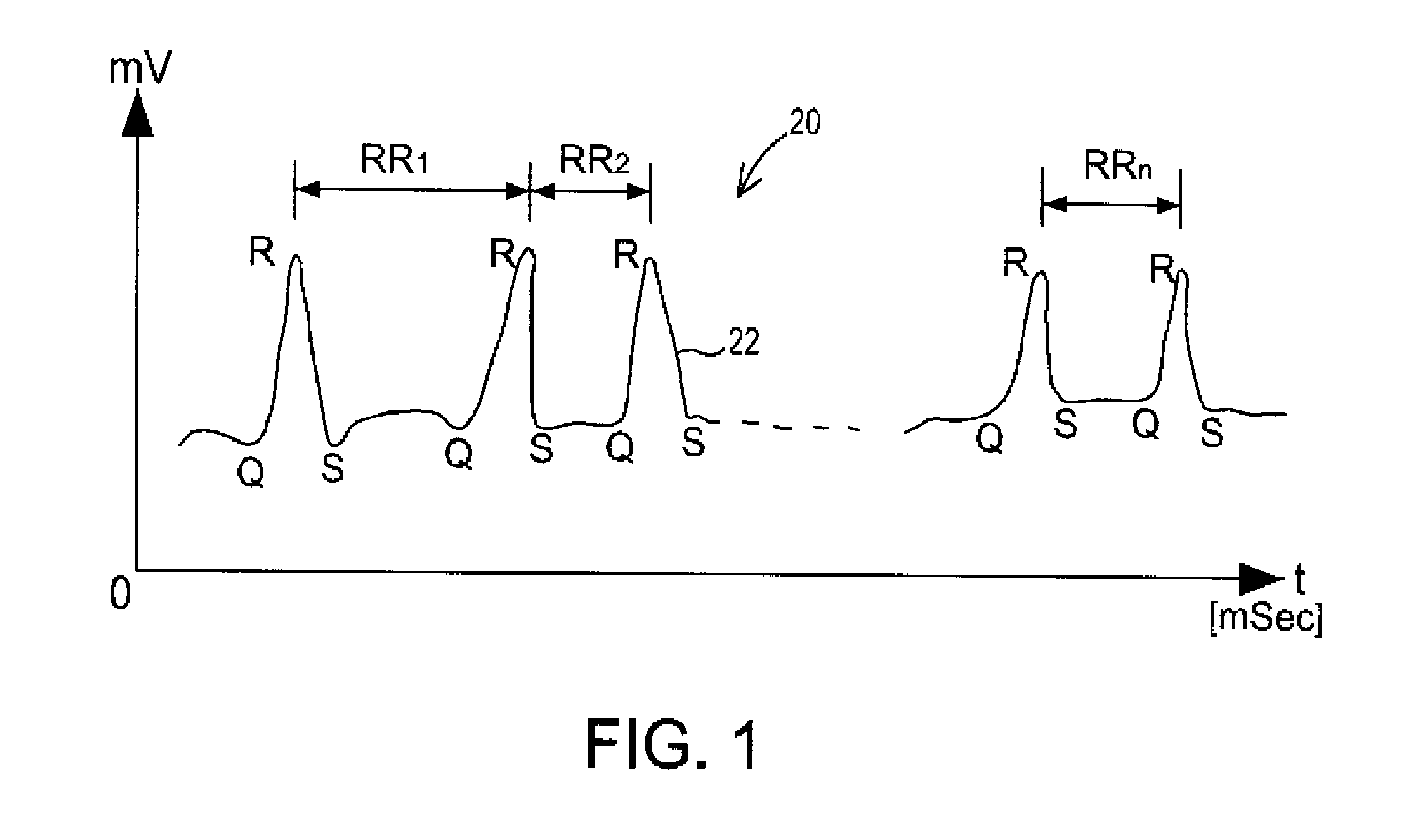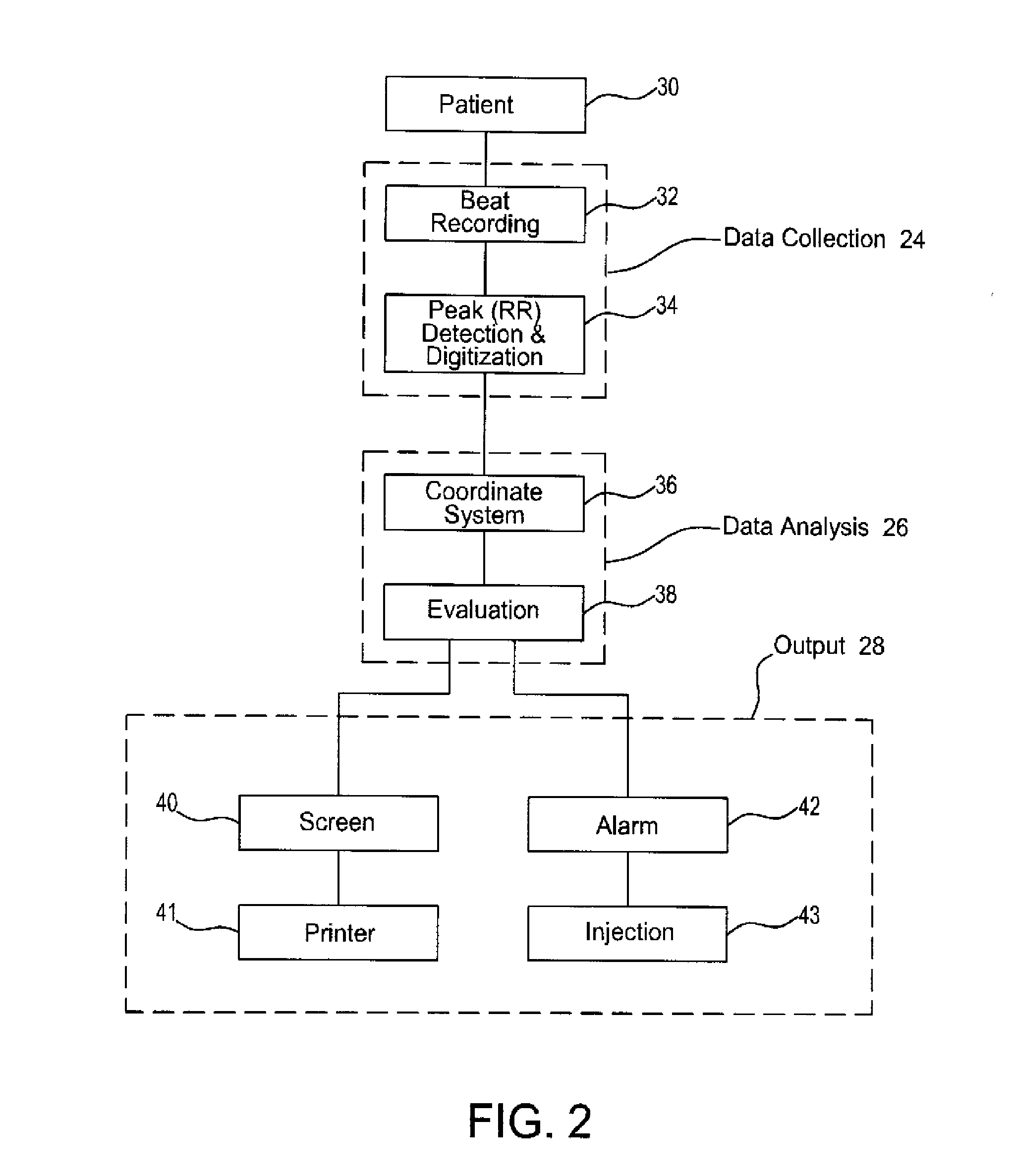Heart rate variability sensor
a heart rate variability and sensor technology, applied in the field of medical methods, can solve the problems of ventricular fibrillation (vf) and sudden death, neurological damage or death, and algorithms that have been suggested are complicated and/or fail to produce reliable hrv values in clinical applications
- Summary
- Abstract
- Description
- Claims
- Application Information
AI Technical Summary
Benefits of technology
Problems solved by technology
Method used
Image
Examples
Embodiment Construction
[0053]Reference will now be made in detail to embodiment(s) of the present invention, examples of which are illustrated in the accompanying drawings, wherein like reference numerals refer to the like elements throughout. The embodiment(s) is / are described below to explain the present invention by referring to the figures.
[0054]Referring to FIG. 1, there is shown a graphic illustration of a heartbeat wave or series of waves 20, as detected by an electrocardiograph (ECG) or similar device. A “beat-to-beat interval” is the time between equivalent points on adjacent waveforms. As noted above, by convention each wave contains standard reference points “QRS”. Accordingly, heartbeat waves 20 may be defined as a series of RR or peak intervals, as shown in the figure by intervals RR1, RR2, and RRn. It is to be appreciated that heartbeat intervals could also be measured with respect to any other equivalent points on the wave, such as the points “Q” and “S”, for example. For convenient referen...
PUM
 Login to View More
Login to View More Abstract
Description
Claims
Application Information
 Login to View More
Login to View More - R&D
- Intellectual Property
- Life Sciences
- Materials
- Tech Scout
- Unparalleled Data Quality
- Higher Quality Content
- 60% Fewer Hallucinations
Browse by: Latest US Patents, China's latest patents, Technical Efficacy Thesaurus, Application Domain, Technology Topic, Popular Technical Reports.
© 2025 PatSnap. All rights reserved.Legal|Privacy policy|Modern Slavery Act Transparency Statement|Sitemap|About US| Contact US: help@patsnap.com



